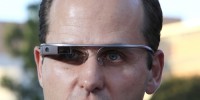When will law grads and law jobs reach equilibrium? Between 2015 and 2021, depending on who you ask

Back in October at the Midwest Association of Prelaw Advisors conference, University of St. Thomas School of Law professor Jerry Organ (who also blogs at The Legal Whiteboard) predicted that, owing to a decreasing number of law students, available jobs will meet or exceed the number of law school graduates by 2016, “as I recall,” Appalachian School of Law professor Pamela Marie Young wrote at The Red Velvet Lawyer last month.
She then looked at National Association for Law Placement data to see if it would support that prediction. She assumed that “enrollment of first-year law students will decline by 8 percent from the previous year through the 2015 entering class,” that 12 percent of each entering class would not graduate, that “new full-time jobs in three categories—bar required, J.D. advantage, and other professional jobs—will hold steady at the 2012 level of 31,776 jobs,” and that all categories of full-time jobs would hold steady at 33,759. Based on that, she saw the equilibrium coming in 2017.
Ohio State University law professor Deborah Merritt decided to crunch numbers herself and posted her conclusions at Law School Cafe. She used “the appropriate ABA data,” assumed that 10 percent of each entering class would not graduate, and considered long-term full-time jobs requiring bar passage. She arrived at 2021.
The National Jurist then picked up on the posts and weighed in. It points out that the highest-ever rate of law grads employed in full-time legal jobs was 84.5 percent. And between 1998 and 2008, it hovered at 75 percent. And if one considers that 75 percent figure the “historical equilibrium,” then the class of 2016 will reach it. The publication promises a chart with all of the data in its January issue.
Meanwhile, Young is still exploring the topic in follow-up posts at the Red Velvet Lawyer. “How should we count ‘JD advantage’ jobs in assessing job equilibrium for law school grads?” she asks. And “how should we count the unemployed and students seeking advanced degrees in assessing job equilibrium for law school grads?”
Delivery drones and fighting crime
After Jeff Bezos revealed Amazon’s delivery drone plan on 60 Minutes this week, it was acknowledged that getting this scheme to fly with the Federal Aviation Administration is its primary challenge.
But Forbes blogger Kashmir Hill points out at The Not-so Private Parts that law enforcement “may already be gritting its teeth over the idea.” What if, say, online drug bazaar Silk Road were able to use drones to make deliveries?
“When you drop off a package at an automated postal machine, it takes a photo of you and keeps it on file for 30 days,” Hill wrote. “That can help law enforcement figure out who sent a package full of drugs.”
The postal service also logs all mail for law enforcement, which can open a letter if they have a warrant to do so. These powers allowed authorities to track ricin-laced letters sent to President Barack Obama and New York City Mayor MIchael Bloomberg back to actress Shannon Richardson. (She took a plea deal in the case last week, the Los Angeles Times reports.)
All he wants for Christmas …

Google Glass. Joe Seer / Shutterstock.com
The Droid Lawyer, Jeffrey Taylor, received an invitation this week to purchase Google Glass. “Unfortunately, I don’t have the $1,500-plus to actually purchase Glass. So, naturally, I’m devastated.”
So he has started his own Kickstarter of sorts, seeking donations via PayPal in hopes of raising the cash by Sunday, Dec. 8. If he misses the goal, all donations will be refunded.
“if you’re offended by my petty panhandling, apologies,” Taylor writes. “This is purely selfish.”



